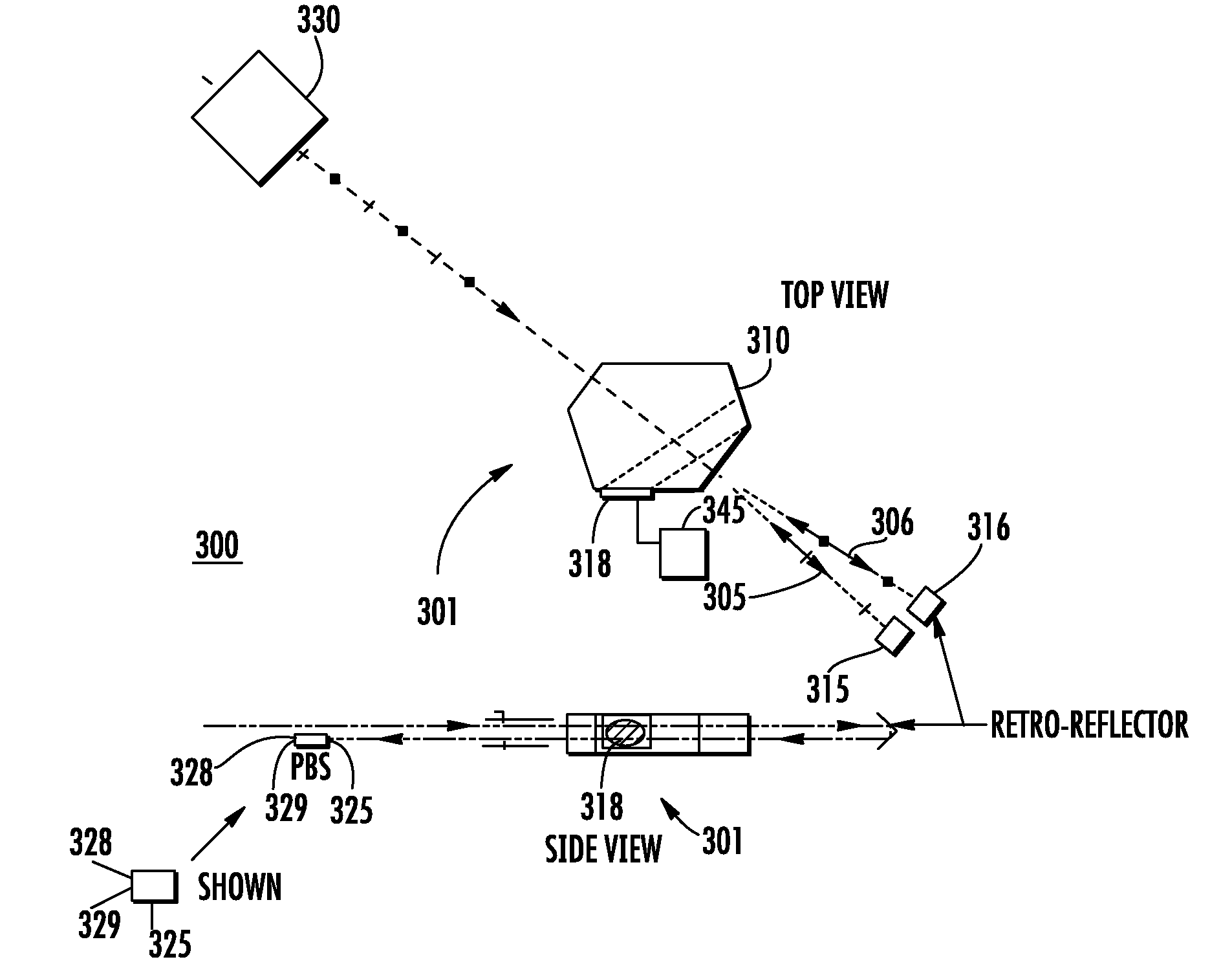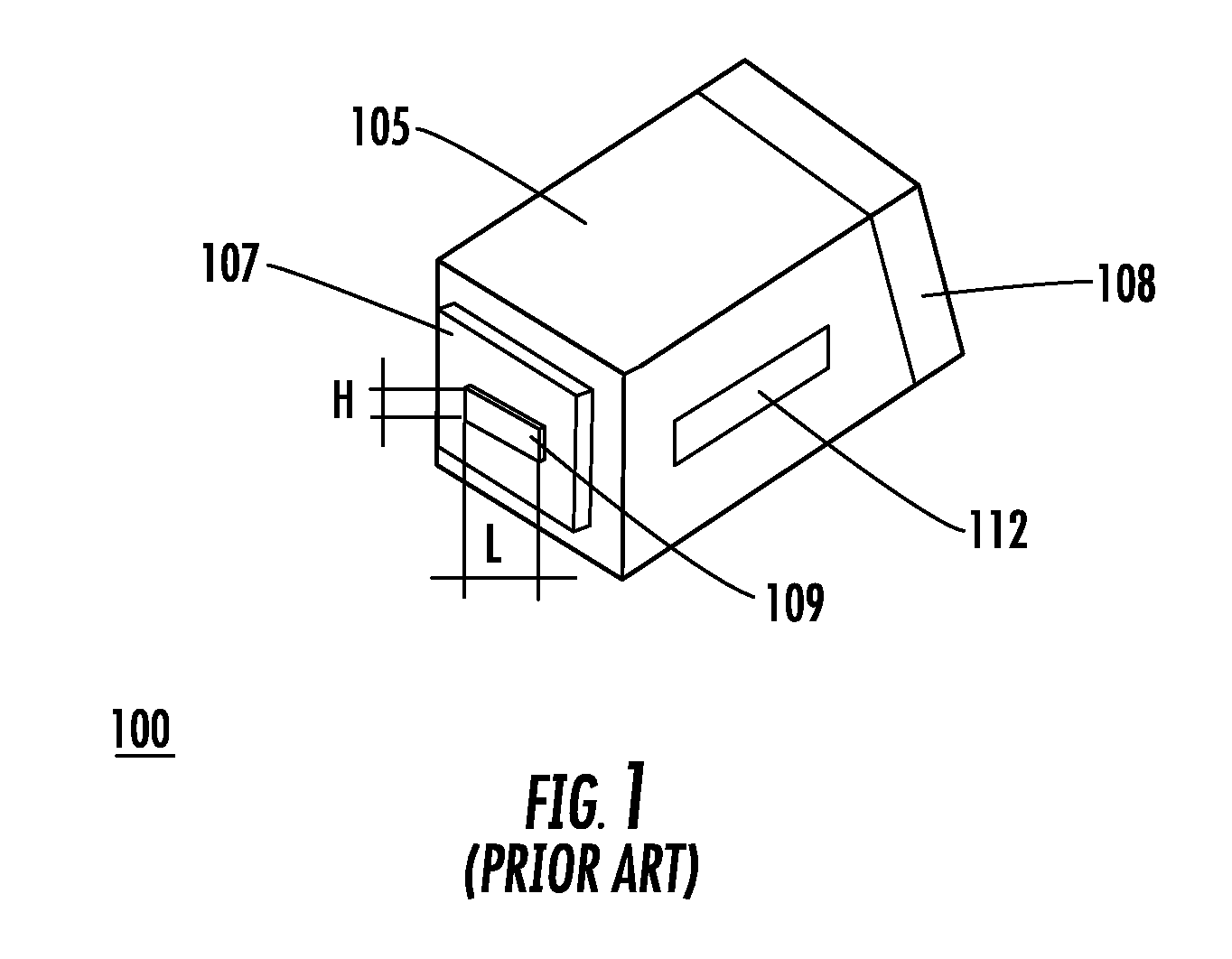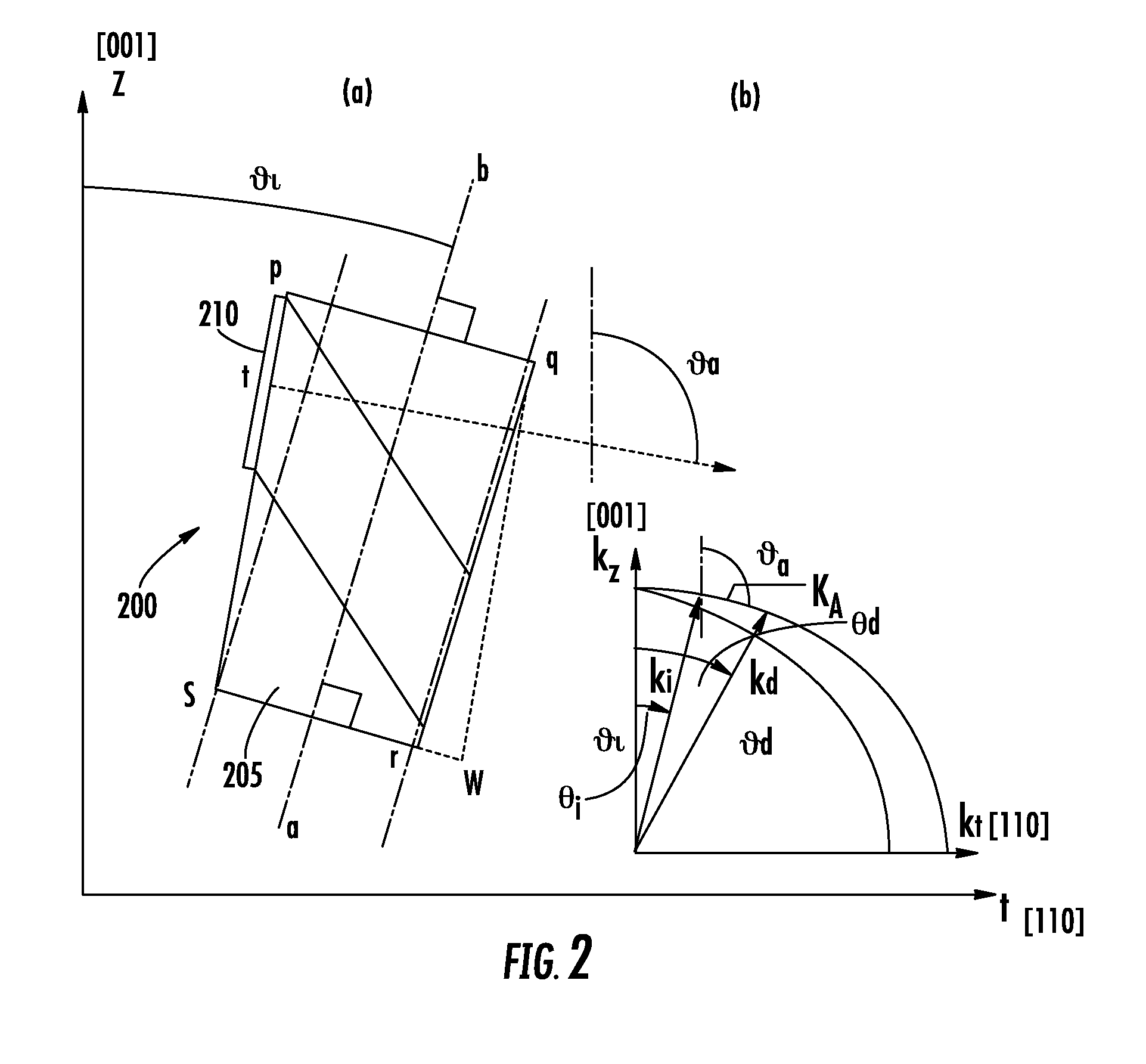High frequency acousto-optic frequency shifter having wide acceptance angle
- Summary
- Abstract
- Description
- Claims
- Application Information
AI Technical Summary
Benefits of technology
Problems solved by technology
Method used
Image
Examples
examples
[0062]It should be understood that the Examples described below are provided for illustrative purposes only and do not in any way define the scope of the invention.
[0063]FIG. 11 is a schematic diagram of a dual polarization AO frequency shifter 1100 according to an embodiment of the present invention designed for minimum acoustic attenuation which includes an acoustic absorber 1120, found to provide good performance. The prototype AO frequency shifter 1100 was fabricated for use in a laser Doppler velocimetry (LDV) system. In order to make room for acoustic absorber 1120, the transducer 1115 was located away from the output face of the TeO2 crystal so as to allow for the walk-off of the acoustic beam. The transducer electrodes are not shown.
[0064]When AO frequency shifter 900 shown in FIG. 9 was tested, all aspects of the performance measured were in accordance with the design calculations / simulations, i.e. simultaneous dual-polarization (e and o polarization) diffraction occurred a...
PUM
 Login to View More
Login to View More Abstract
Description
Claims
Application Information
 Login to View More
Login to View More - R&D
- Intellectual Property
- Life Sciences
- Materials
- Tech Scout
- Unparalleled Data Quality
- Higher Quality Content
- 60% Fewer Hallucinations
Browse by: Latest US Patents, China's latest patents, Technical Efficacy Thesaurus, Application Domain, Technology Topic, Popular Technical Reports.
© 2025 PatSnap. All rights reserved.Legal|Privacy policy|Modern Slavery Act Transparency Statement|Sitemap|About US| Contact US: help@patsnap.com



